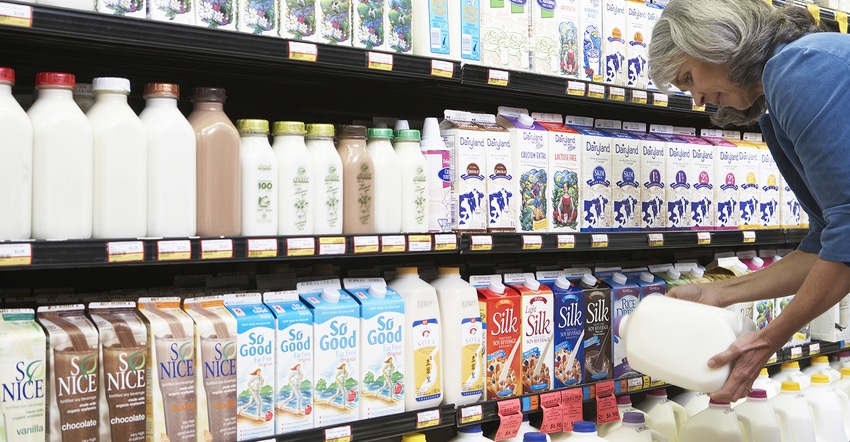
Milk prices continue to recover slowly. The Class III price for April ended up at $14.50 per cwt, compared to $14.22 for March and $13.40 in February. Improved dairy exports are providing some optimism for better milk prices, according to Bob Cropp, University of Wisconsin Extension dairy economist.
“Exports have been running higher than a year earlier since July of last year,” Cropp says. “Dairy exports on a volume basis reached an all-time high in February due to increased exports to China, Southeast Asia, South America, Middle East-North Africa and Japan.”
Compared to February 2017, exports this February were: nonfat dry milk-skim milk powder up 28%, cheese up 7%, butterfat up 21%, total whey products up 7% with dry whey up 29%, and lactose up 27%. On a total milk solids basis, February exports were equivalent to 17.2% of U.S. milk production, compared to 14.8% last year.
Positive news
In 2017, fluid milk sales declined 2%, and growth in both butter and cheese sales was relatively weak. According to Cropp, stronger economic growth is projected for this year, which is positive for sales.
“January through February sales of fluid milk were 1.1% lower than a year ago, but it is encouraging that domestic commercial disappearance increased 2.8% for butter, 4.3% for American cheese and 3.6% for other types of cheese,” Cropp says.
With more optimism for domestic sales and dairy exports, how much milk prices improve for the remainder of the year depends a lot on the amount of milk produced. USDA revised down increases in milk production from 1.8% for both January and February to 1.7% and 1.6%, respectively. A positive sign for continued improvement in milk prices is USDA’s estimated March milk production, up just 1.3%.
Milk cow numbers have declined by 2,000 head — the first decline since September of last year — and were just 0.2% higher than a year ago. The slowdown in milk production came from a relatively small increase in milk per cow of just 1.1%.
This year the growth in milk production is coming from the West, with little or no increase in the Northeast and Midwest.
“In the West, the increases in March milk production compared to last year were: Arizona 2.8%, California 2.7%, Idaho 4%, New Mexico 1.9%, Texas 4.8%, and Colorado and Utah leading all 23 reporting states with increases of 7.4% and 5.5% [respectively]. In the Northeast, Michigan had just 0.8% more milk, and New York and Pennsylvania had 1.2% and 0.3% less milk, respectively,” Cropp says. “Bad winter weather no doubt was a contribution factor for less milk per cow or small increases, and explains the changes in Northeast milk production. In the Midwest, milk production was up 1% in Iowa, 0.9% in South Dakota, with no change for Wisconsin and a decrease of 1.1% for Minnesota.”
According to USDA, both Minnesota and Wisconsin have had significant declines in milk cow numbers — of 5,000 and 6,000 head, respectively. Iowa had no increase in milk per cow, and South Dakota saw less milk per cow. USDA is still forecasting milk production for the year to end up 1.6% higher than last year, from 0.2% more milk cows producing 1.4% more milk per cow.
But Cropp is a little more optimistic about milk prices. “It now appears the Class III price could be in the $15s by June and in the $16s by August, but still averaging for the year about a dollar lower than the $16.17 average last year,” he says.
About the Author(s)
You May Also Like






